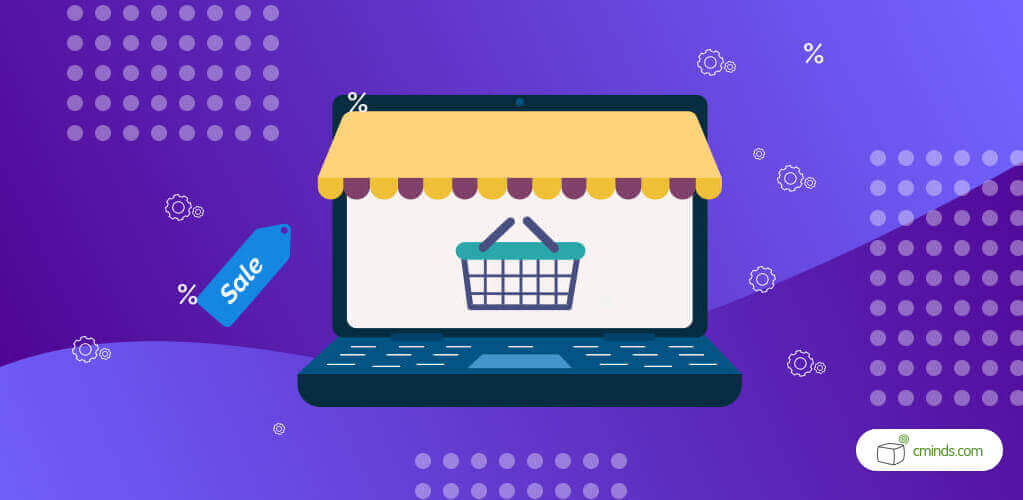eCommerce returns can really take the wind out of your sales (pun intended). Here’s how to keep afloat.

With the holiday season wrapping up, we’ve now officially entered the time of the year where returns are most common. This can prove especially daunting to online sellers who recently enjoyed a profitable holiday season, only to see a notable portion of those sales come right back.

However, in practice, product returns aren’t such a bad thing. In fact, recent studies show that over 90% of shoppers will make additional purchases if their return experience is positive.
This means that returns don’t have to be considered unfortunate losses. Instead, they become new opportunities to sell—which is great news considering consumers now return products more than ever before.
April 2024 Offer – For a Limited Time Only:
Get M2 Marketplace Multi-Vendor Manager for 25% off! Don’t miss out!
4 Efficient Ways to Handle Ecommerce Returns
Ultimately, a good product return policy comes almost entirely down to convenience. This can’t be stressed enough, as user-friendliness often determines whether a multi-vendor marketplace sinks or swims.
And while offering costless shipping and other tactics to encourage easy Ecommerce returns may appear unnecessarily costly for businesses, as we’ll explain below, store owners actually have a lot more to lose if they refuse to do so.
So, without further delay, here how you should handle your store’s Ecommerce returns to stay on top of the competition:
1. Offer Free Customer-Friendly Ecommerce Returns
Any online seller who wants to stay competitive should think about offering free Ecommerce returns.
As the study mentioned earlier shows, about half of all online retailers already offer return shipping for free. This is something that 79% of internet shoppers believe they’re entitled to, and 67% of shoppers actively check before purchasing.

Basically, not providing your customers with easy returns not only discourages repeat business, but also deters potentially new customers.
Obviously, this loss of customer traffic isn’t something any growing business wants or should let happen. Especially since the losses incurred through free return policies are completely overshadowed by the greater cost of a dwindling customer-base.
2. Don’t Take Returns as a Sign of Trouble
Ecommerce returns are bound to happen, and there’s no point in stressing over them when they do.
Returns an inevitable part of any marketplace, and should instead be embraced to create a positive impression on your business. Plus, with at least 30% of online orders, including returns, there’s no way your store won’t face these situations.

There are countless reasons for customers to make returns, many of which will have nothing to do with your services. Sometimes orders are made incorrectly, products arrive, but aren’t exactly what the buyer expected, or damage occurs during delivery.
Regardless of why a return occurs, the important thing is you are prepared to quickly resolve the situation in an efficient manner.
Remember that each returned order shouldn’t be seen as negative, but as a hidden opportunity. Customers usually approach return processes with low expectations, making this your chance to ‘wow’ people and secure more long-term business.
3. Condense All Returns Under a Single Policy
Since each order in your multi-vendor marketplace uses the same overarching cart system, a single return policy is only natural.
To see what we mean, think of other successful multi-vendor marketplaces examples, such as Amazon. Despite the fact that Amazon unites countless sellers in one expansive multi-vendor marketplace, all customer purchases and returns are managed from the same user dashboard.

This creates a very straightforward and much more pleasurable shopping experience for customers since there can be no frustrating surprises.
Customers won’t need to consult different return policies for every store they visit, meaning they can browse and buy anything in your multi-vendor marketplace confidently.
4. Openly Promote your Marketplace’s Return Policy
It’s a good idea to raise awareness for your multi-vendor marketplace’s return policy by making it easy-to-find across your webpages.
Being upfront about an accommodating return policy creates a sense of trustworthiness in your business, and builds confidence in shoppers. Reminders and instructions placed throughout the purchasing process, and in confirmation emails, are also effectively used to quell possible customer concerns.

Don’t worry about lasting negative effects of advertising your marketplace’s availability for returns, because there really aren’t any.
In reality, promoting your return policy won’t actually increase the rate of Ecommerce returns in your multi-vendor marketplace.
This is because people who are going to make returns will do so regardless of how apparent your policy is, and on that same note, drawing attention to your return policy won’t inspire any abusive behavior from those who weren’t already going to try and take advantage of your store.
Rather, a well promoted return policy will simply relay the impression that your business is honest, personable, and considerate to the needs of your customers—which is always a good thing to show off.
Conclusion
Applying the above tactics to your multi-vendor marketplace will lead to more effective Ecommerce returns and satisfied customers before long. Ecommerce returns are always going to be around, and experience shows that a full customer-centered approach almost always works best.
Just remember, most of this really boils down to creating a user-friendly environment that makes the visitors of your marketplace feel secure while they shop.
An Excellent Product Return Extension for Magento

For Magento store owners who want to improve the management of their Ecommerce returns, check out this helpful extension from CreativeMinds.
The Magento RMA extension empowers Magento stores with a form-based return system that makes managing Ecommerce returns easy. It works by providing customers the ability to return products using an RMA form that’s tailored to the policies of any unique marketplace.
It’s packed with an administrative dashboard that lets store owners set product return permissions, along with data tracking and return monitoring that helps stores improve their customer service standards and create a better overall return system that shoppers will love.


